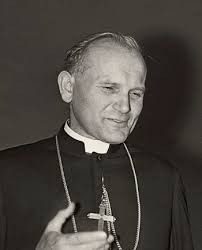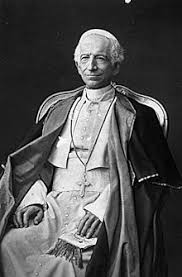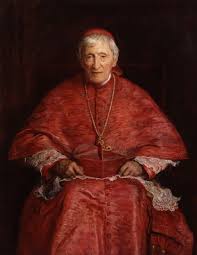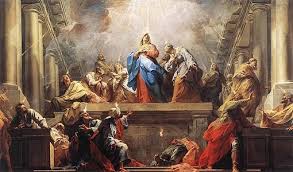Our Lord would most accurately be labeled, at least according to modern standards, a total prude. He reached a puritanical pinnacle by inventing a totally new category of adultery which he dubs “adultery in the heart” that occurs when a man looks at a woman with lust. This divine priggishness makes it practically impossible for men and women to even be around each other, or at least that is how it seems. The modern mind, trapped in a world without virtue, can only see two options: puritanical or prurient. But Our Lord is really offering a third option, one that ultimately leaves us with the power to love freely and not free love-ers.
Anyone encountering the Sermon on the Mount for the first time must immediately be struck by the unbelievable idealism of the mode of life Christ is putting forth. He would be the world’s most moralistic man except for one important detail. Whenever Our Lord issues a command, He never simply leaves us to our own devices, but also seeks to give us the power to fulfill His commands. His coming to “fulfill the law” isn’t just a matter of prophecy but a matter of grace. Through the power of His grace we are able to fulfill even the most idealistic of His commands, the command not to look upon a man or woman with lust included.
Christ the True Moralist
Herein lies a major point of misunderstanding about Christ the moralist. His commandments are such that they both contain the path to freedom while simultaneously leading us to freedom. He is the Truth and the Way. What Christ is commanding is really an offer that will free us from looking upon another person with lust. The power to see the other person as a person and not merely an object of pleasure. This power then opens the gates of freedom that enable us to love purely as the only true path to happiness.
This pathway to love however also requires us to properly understand what it means, and more importantly what it doesn’t mean, to look at someone with lust. Lust is not just looking at person of the opposite sex, but is a gaze that is filled desire to use the other person. In this regard it is helpful to turn to Pope St. John Paul II’s teachings in Love and Responsibility.
Love and Responsibility and Lust
The former Fr. Wojtyla sought to explain how attraction is felt between members of the opposite sex. In encountering a person of the opposite sex, a man or woman has a natural response to the sexual value of the other person. These responses come in two forms: sensuality or the reaction to the sexual value in the other person’s body, and sentimentality or the reaction to their perceived masculinity or femininity. This spontaneously felt response, without the governing of reason, finds its culmination in the desire to possess the value. Notice that it is the value itself that we desire to possess regardless of the person who possesses that value. The other person becomes an object of use, rather than a subject to love. John Paul II labels this phenomenon subjective egoism because it is based completely on how the person feels in response to the other person. Lust then is the expression of the desire to possess the value, it is the choice to use the other person.
This distinction between interest and expressing the desire is important because merely acknowledging the sexual value of the other person (we might call this interest) is not the same thing as lust. Interest is perfectly natural and in a very real way something that happens to us rather than something chosen. It is not just the seed of lust but also the seed of love. Once the interest is piqued, desire is sparked. Desire sees the person as an object to be enjoyed but still is not sinful as long as the will resists that desire to use the person. This too is an important element of love, but it must always be purified such that it is directed to the whole person.
A few examples might help. A man sees a woman and is drawn towards some perceived sexual value in her body. His emotional response brings him pleasure and he must now make a decision. Will he continue to linger on the fact that she is “hot” and the pleasure that looking at her brings or will he remind himself that it is a person and that using her (even though all he is doing is looking at her) is wrong? If it is the former, then he has lusted. If it is the latter then he has, even in a very primitive way, expressed love for her by willing her good in choosing not to treat her like an object for his own enjoyment.

Notice that what is being suggested is not repression. The attraction is natural and there can be no love without it. What has to be “repressed” is the urge to use the person. The man may feel the attraction and move to meet her, but in order not to be lust, he must go to her as a person and treat her as such. The attraction is still there, but it must move the man towards its proper end—the woman who has stirred his heart and not just her body. In being free from lust, he is now free to love the woman and not his own emotional response to the sexual value of the woman.
Adultery in the heart has everything to do with what is happening interiorly in the man and it is from this that Christ offers freedom. How this happens can be shown by two further examples.
Imagine a married man meets another woman with whom he has regular contact and she awakens sexual interest in him. He begins to develop sexual desire for her and so now he chooses to avoid her because he fears that he may lust after her. To avoid the near occasion of sin is a good thing, but it is not yet freedom. Freedom comes when there is no threat of lust, that is, when the man is chaste.
Like all virtues, chastity governs the spontaneous arising of the emotions attached to attraction. The man is simply able to acknowledge the woman’s beauty without being stirred to lust. He is free now to see her as a person who is beautiful without any desire to possess either her or her beauty. He can simply appreciate it as beautiful and move on. The truly chaste married man only feels attraction for his wife.
Likewise, the chaste unmarried man will feel the emotions of attraction, but they will be moderated such that they do not move him to use the person. Instead he is drawn towards the person and able to pursue her purely based on her personality and not solely on her attributes. He can see her in truth and not be blinded by those attributes. He is completely free in his love for her.
Our Lord’s prudery then is nothing less than an offer for authentic freedom. Our Lord practiced chastity to the perfect degree and has offered us each a share in His virtue in order to free our hearts to love to the full.
















